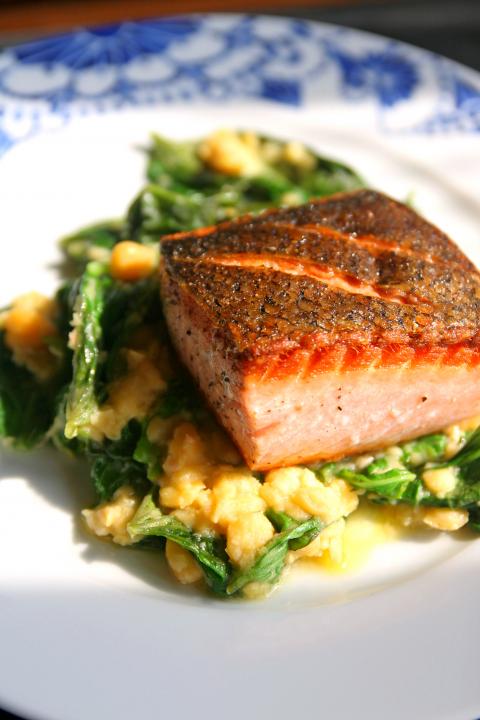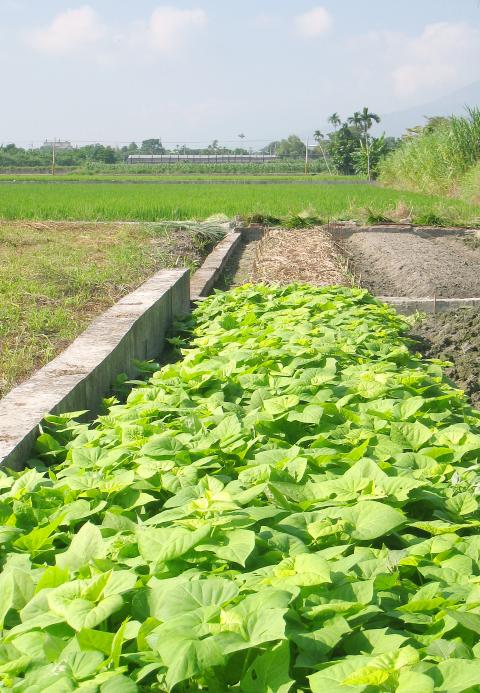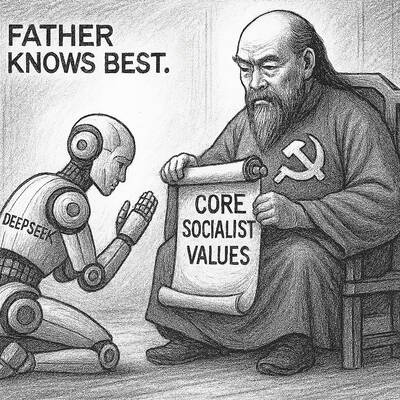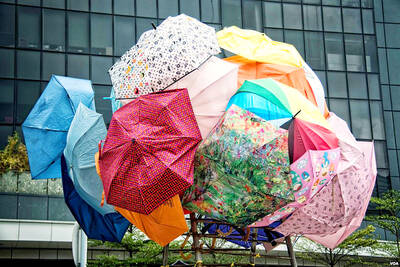In Taiwan, vegetables don’t get much more humble than sweet potato greens (地瓜葉). Until quite recently, they were regarded as food for pigs, and many among Taiwan’s older generation have memories of resorting to sweet potato leaves has a last bastion against hunger in the day’s before the island’s economic miracle.
After years of media reports about the excessive use (and harmful residues) of pesticides, herbicides and chemical fertilizers of more upmarket vegetables, the health-conscious are beginning to rediscover sweet potato greens as a relatively uncontaminated vegetable. And the very reason for its new appeal is the fact that this low cost vegetable is robust enough to survive the pestilential Taiwan summers with little aid for modern agricultural science, and is much too cheap to warrant the use of expensive chemical aids.
In fact, sweet potato greens often don’t even warrant display space in the larger stalls of traditional markets, and are sold by old ladies with a small harvest of vegetables from their own plots on the fringes of the more established grocers.

According to a study by the University of Arkansas, “sweet potato leaves are comparable to spinach in nutrient content,” with “levels of iron, calcium, and carotene rank[ing] among the top as compared to other major vegetables.” (https://www.uaex.edu/publications/PDF/FSA-6135.pdf) There is also considerable literature on the antioxidant and chronic disease prevention benefits of the vegetable.
That said, it is important to point out at this point that eating sweet potato greens is not just some concession to faddish ideas of healthy eating. They taste delicious, and are not at all difficult to prepare. No less a figure than Mark Bittman, food writer and New York Times columnist has extolled the virtues of this vegetable, only lamenting the difficulty of obtaining it in North America (http://www.thebittenword.com/thebittenword/2010/10/saut%C3%A9ed-sweet-potato-greens.html). In Taiwan, it can probably be found at any traditional market for next to nothing, but to those who have not encountered it before, an unknown vegetable can be a little intimidating.
Sweet potato greens can be stir fried with garlic in conventional Chinese fashion and will taste pretty good, but the leaves may express a dark liquid that makes the dish look unappealing. One way around this problem is suggested by Taiwan’s favorite TV chef, Cheng Yen-chi (鄭衍基), better known as Ah-chi-shih (阿基師), is to use lemon juice, to counter the oxidizing tendencies of the vegetable. My own favorite method is to sauté very quickly with shallot confit (油蔥酥) and thick soy sauce, making for a simple dish that can be prepared in three or four minutes (for both shallot confit and soy sauce, which are both integral flavoring agents, a high quality artisanal brand is highly recommended).

This preparation of a humble vegetable makes a perfect accompaniment to white rice and can be enjoyed as a simple meal in itself, but it can also be used as a wonderful (and insanely cheap) replacement for spinach in many recipes. It should be noted that sweet potato greens cook down considerably, and unlike spinach, they don’t have the same degree of oxalic acid that can often produce an unpleasant astringent taste in spinach dishes. Sweet potato greens, despite their lowly origins, can provide both nutrition and flavor at a minimal financial and environmental cost.
Crispy-skin Salmon with Chickpeas and Sweet Potato Greens
Recipe
(serves two)
Ingredients
Fish
2 pieces salmon fillets (approx. 200g each)
2 tbsp olive oil
salt
pepper
Chickpea
80g dried chickpeas (soaked overnight and cooked; the dried chickpeas can be prepared a day in advance and refrigerated)
2 tbsp olive oil
4 cloves garlic, minced
80ml vegetable stock (or water)
Juice of half a lemon
150g sweet potato leaves (stems removed)
Process 1
1. Score the skin of the salmon with a sharp knife.
2. Clean and dry the salmon with kitchen paper and season with salt and pepper (approx. 20 minutes before cooking).
3. Heat olive oil until almost smoking and then place the salmon skin-side down into the pan. (It is important both that the oil is hot and the fish is dry to ensure that it does not stick; the use of non-stick pans allow a greater degree of latitude.)
4. Cook the fish (with a thickness of about 5cm) for about 5 minutes, pressing down to ensure full contact of the skin with the pan. When the skin is crisp, flip the fish and cook for another 2 minutes for color.
5. Set aside on a sheet of kitchen paper to remove excess oil.
Process 2
1. While the fish is frying, add olive oil to a separate large saute pan. Fry garlic over a low flame until fragrant but without coloring.
2. Add the cooked chickpeas. Season with salt and pepper.
3. Add vegetable stock and bring to a simmer. Lightly crush the chickpeas. Add sweet potato greens. Don’t worry if they seem to almost overflow the pan, as they will cook down rapidly. Stir and allow the leaves to wilt. Add lemon juice. Check seasoning.
4. Place the salmon on a bed of chickpea and greens. Serve with lemon wedges.
Ian Bartholomew runs Ian’s Table, a small guesthouse in Hualien. He has lived in Taiwan for many years writing about the food scene and has decided that until you look at farming, you know nothing about the food you eat. He can be contacted at Hualien202@gmail.com.

Water management is one of the most powerful forces shaping modern Taiwan’s landscapes and politics. Many of Taiwan’s township and county boundaries are defined by watersheds. The current course of the mighty Jhuoshuei River (濁水溪) was largely established by Japanese embankment building during the 1918-1923 period. Taoyuan is dotted with ponds constructed by settlers from China during the Qing period. Countless local civic actions have been driven by opposition to water projects. Last week something like 2,600mm of rain fell on southern Taiwan in seven days, peaking at over 2,800mm in Duona (多納) in Kaohsiung’s Maolin District (茂林), according to

It’s Aug. 8, Father’s Day in Taiwan. I asked a Chinese chatbot a simple question: “How is Father’s Day celebrated in Taiwan and China?” The answer was as ideological as it was unexpected. The AI said Taiwan is “a region” (地區) and “a province of China” (中國的省份). It then adopted the collective pronoun “we” to praise the holiday in the voice of the “Chinese government,” saying Father’s Day aligns with “core socialist values” of the “Chinese nation.” The chatbot was DeepSeek, the fastest growing app ever to reach 100 million users (in seven days!) and one of the world’s most advanced and

The latest edition of the Japan-Taiwan Fruit Festival took place in Kaohsiung on July 26 and 27. During the weekend, the dockside in front of the iconic Music Center was full of food stalls, and a stage welcomed performers. After the French-themed festival earlier in the summer, this is another example of Kaohsiung’s efforts to make the city more international. The event was originally initiated by the Japan-Taiwan Exchange Association in 2022. The goal was “to commemorate [the association’s] 50th anniversary and further strengthen the longstanding friendship between Japan and Taiwan,” says Kaohsiung Director-General of International Affairs Chang Yen-ching (張硯卿). “The first two editions

It was Christmas Eve 2024 and 19-year-old Chloe Cheung was lying in bed at home in Leeds when she found out the Chinese authorities had put a bounty on her head. As she scrolled through Instagram looking at festive songs, a stream of messages from old school friends started coming into her phone. Look at the news, they told her. Media outlets across east Asia were reporting that Cheung, who had just finished her A-levels, had been declared a threat to national security by officials in Hong Kong. There was an offer of HK$1m (NT$3.81 million) to anyone who could assist